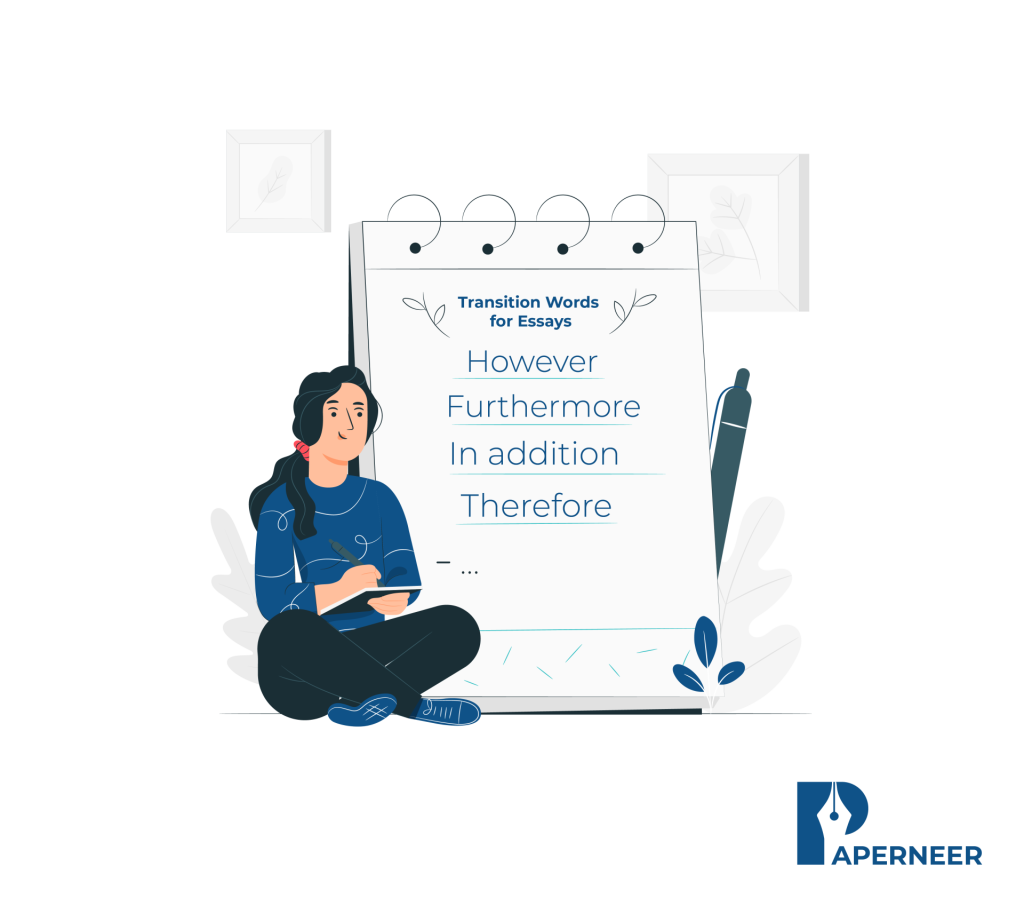Capstone Project – A Complete Guide A capstone project is sometimes the...
Read MoreTransition Words for Essays Writing

Transition words area unit the unsung heroes of essay writing. Whether or not you’re a seasoned author or a student crafting your initial essay, these words and phrases facilitate connecting ideas, ensuring that your content flows swimmingly. While not transition words, essays will feel disjointed or confusing. That’s why exploiting them effectively could be an ability each author ought to master. Transition Words for Essays act like bridges, linking sentences and paragraphs logically and cohesively. During this diary, we’ll explore what transition words area unit, their sorts, and how you can use them to reinforce your essays.
In this blog, you will find:
What Are Transition Words and Why Are They Important?
Transition words area unit the glue that holds your writing along. They guide readers through your arguments by showing relationships between concepts, making them easier to know. Whether or not you’re different, comparing, or adding info, these words clarify the connections between sentences and paragraphs.
- For instance, compare the subsequent examples:
- Without transition words: “The weather was harsh. The crops failing.”
- With transition words: “The weather was harsh; as a result, the crops failing.”
- The inclusion of as a result not solely links the two sentences but conjointly highlights the cause-and-effect relationship.
Why are area unit Transition Words Crucial for Essays?
- Improved Readability: Essays that use transition words are more accessible to scan and follow.
- Stronger Arguments: They assist in emphasizing the connections between ideas, making your essay much more persuasive.
- Engaging Content: Transition words keep readers engaged by maintaining a logical data flow.
Types of Transition Words for Essays
Transition words may be categorized to support their purpose. Let’s explore every kind in more extensive detail:
Addition
- These words enable you to expand on a concept or add new info. Examples: Furthermore, in addition, additionally, also.
- Use Case: “The answer was effective; furthermore, it had been cost-effective.”
- Using additional words helps reinforce your points, mainly once you present multiple Use Cases: arguments or proof items.
Contrast
- These words highlight variations or contradictions. Examples: but, on the contrary, withal, yet, conversely.
- “The product was innovative; but, it didn’t gain market traction.”
- Contrast words are helpful in litigious essays once presenting counterpoints or various views.
Cause and result
- These words show the connection between associate degree action and its consequences. Examples: thus, consequently, thus, hence, for this reason.
- Use Case: “The plant enforced property practices; consequently, its carbon footprint was reduced.”
Comparison
- Illustrate similarities between concepts or points. Examples: equally, likewise, within the same means, just as.
- Use Case: “The initial model was successful; likewise, the second version exceeded expectations.”
Sequence
- Help organize info chronologically or logically. Examples: initial, second, next, then, finally.
- Use Case: “First, analyze the data; next, draw conclusions.”
- Sequence words are indispensable in method or educational essays, wherever steps ought to be conferred.
Emphasis
- Highlight key points or concepts.
- Examples: so, in fact, indeed, while not a doubt, above all.
- Use Case: “Without a doubt, transition words enhance writing quality.”
Examples/Illustration
- Provide clarity through examples.
- Examples: for instance, as an example, such as, let’s say.
- Use Case: “For example, exploitation ‘however’ in associate degree essay clarifies different concepts.”
Conclusion
- Signal the tip of a discussion or summarize small print.
- Examples: finally, to summarize, all in all, ultimately, to sum up.
- Use Case: “To summarize, transition words square measure essential for essay coherence.”
H2: How to Incorporate Transition Words into Essays
Plan Ahead
i) Begin by outlining your essay. Confirm wherever transitions square measure required to link paragraphs and concepts effectively.
ii) For instance, during a five-paragraph essay, you may arrange transitions such as:
- Introduction: Use to start with or first off.
- Body Paragraphs: Incorporate next, additionally, or on the opposite hand.
- Conclusion: Conclude within the outline or ultimately.
Match Transitions to Purpose
i) Different sections of your essay might need differing types of transitions. For example:
- When comparing two concepts, use equally or likewise.
- When presenting proof, decide on what is additional or what is more.
ii) To signal a conclusion, use to add up or lastly.
Avoid Overuse
While transition words are essential, overusing them will make your writing feel forced. Use them naturally and solely wherever they add price.
Common Mistakes When Using Transition Words
Mistreatment of the incorrect Word
Each transition word serves a particular purpose. Misusing them will confuse your readers. For example, mistreatment, wherever further is required, will disrupt the flow of ideas.
Overloading Sentences
- Avoid stuffing too many transition words into one sentence. For example:
- Overloaded: “However, moreover, the results, therefore, indicated important progress.”
- Improved: “However, the results indicated important progress.”
Neglecting Paragraph Transitions
Transitions between paragraphs should be square and measured as necessary as at intervals. While not them, your essay will feel disjointed.
Examples of Effective Transition Word Use
Example 1: Disputatious Essay
- Without Transitions: “Renewable energy is efficient. it’s environmentally friendly.”
- With Transitions: “Renewable energy is cost-effective; what is more, it’s environmentally friendly.”
Example 2: Narrative Essay
- Without Transitions: “The sun set. The temperature born.”
- With Transitions: “As the sun set, the temperature born.”
Advanced Tips for Mastering Transition Words
1) Combine with Topic Sentences
Start every paragraph with a subject sentence that features a transition word. This introduces the paragraph’s primary plan and creates a swish link to the preceding section.
2) Use Synonyms to Avoid Repetition
Instead of repetition, finally or but, switch to alternatives like ultimately or withal.
3) Practice with Short Essays
Write short essays specializing in one sort of transition word. For example, produce a chunk of mistreatment solely comparison transitions to urge comfort with their use.
Conclusion
Transition words for essays are an essential ingredient to polished, mean writing. By incorporating them strategically, you can manufacture essays {that aren’t |that are not} entirely clear and interesting but are persuasive and cohesive. As you refine your writing skills, remember that transition words unite your tools for guiding readers smoothly through your thoughts.
Moreover, the proper use of transition words demonstrates your command of language and strengthens your arguments. They assist in producing a natural flow, making your essays a lot more gratifying and impactful. With consistent follow, you’ll master the art of essay writing, impressing readers with content that flows effortlessly. So, next time you are engaged in an Associate in Nursing essay, use this guide to confirm your writing flows seamlessly. With following and careful application, your essays will leave an everlasting impression on your readers.
Say goodbye to Mistakes in Term Papers
Avoid Errors in Term Papers Writing a theme may be a vital tutorial task that needs careful designing and...
Read MoreUnraveling the Stories: Autobiography vs Biography
Autobiography vs Biography Understanding the excellence between autobiography and biography is crucial for...
Read More




